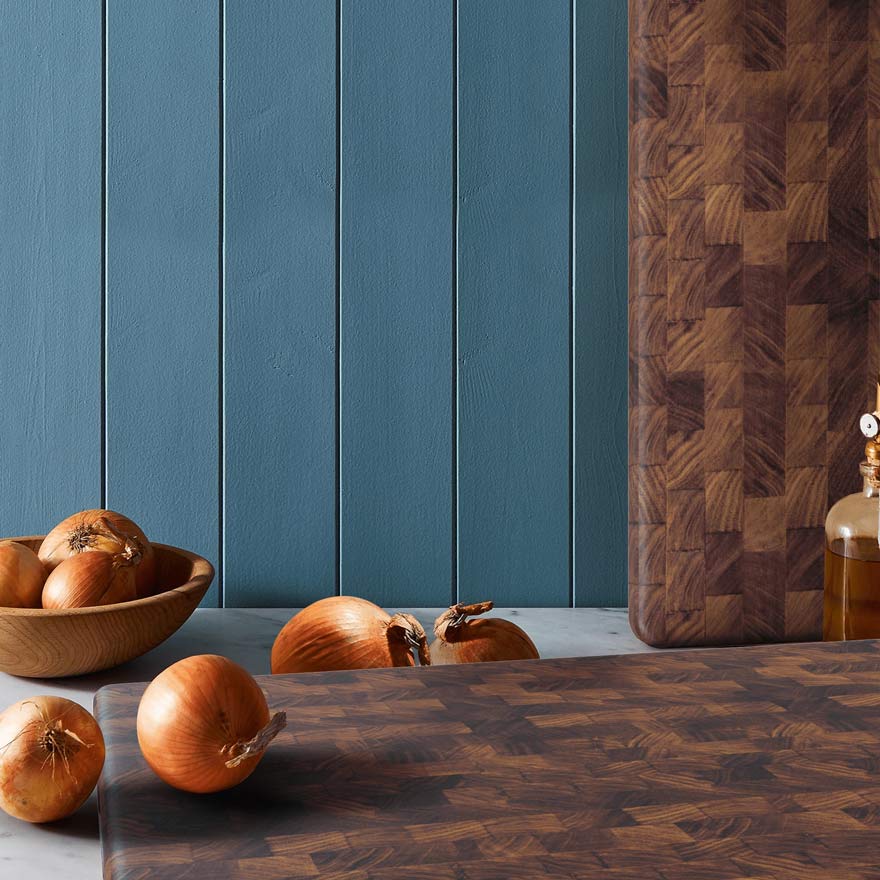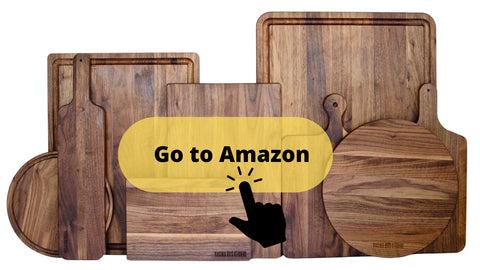5 Features to Look Out For in a Quality End Grain Cutting Board
Finding the perfect end grain cutting board can be difficult. That’s because it often involves choosing between contradictory features.
For instance, you want a board that’s tough enough to pound chicken cutlets but soft enough to keep your carving knife sharp and ready for Thanksgiving turkey. The problem is that tougher boards are generally knife-dulling, while softer boards are less durable.
That said, there are reliable features you can use to identify quality boards:
- Low porosity
- High Janka score (above 1000)
- High sustainability
- Size (15 by 20 inches)
- Thickness (2 inches)
In the following sections, we’ll delve into what these five reliable features are and explain why they’re important for cutting boards.
Feature 1 - Low Porosity
Pay attention to the board’s porosity, which is how tight the individual wood grains are. Are the pores large and visible to the naked eye?
If yes, then that’s an open grain board and highly porous, which isn’t ideal for a cutting board.
Porosity makes boards vulnerable to water damage since it facilitates large fluctuations in moisture content during the wash-dry cycles. This causes repeated shrinking and swelling, which wears out the boards and leads them to:
- Developing deep cracks and breaks
- Warping out of shape
- Losing their aesthetic appeal
High-moisture, porous boards can also harbor bacteria such as salmonella, listeria, and E. coli from infected meat and poultry. When the same boards are used to dice vegetables and fruit, cross-contamination occurs.
On the other hand, quality cutting boards are made of closed-grain wood such as birch, cherry, maple, and American black walnut.
These boards have very narrow pores that are invisible without a magnifying device. Their narrow pores limit porosity, moisture content, and susceptibility to water damage. They also prevent cross-contamination, which is common for multi-purpose boards (boards used to cut vegetables, fruit, and raw meat).

Feature 2 - High Janka Hardness Score
The Janka hardness test measures wood’s resistance to denting and wear.
It’s primarily used to determine if a wood specimen is suitable for flooring but can also measure the strength of everyday wood items, such as cutting boards.
The test involves a wood specimen with a cross-section of 2 by 2 inches and an 11.28 mm steel ball.
The steel ball is forced into the wood sample until half its diameter is embedded. The amount of force used to embed the ball is then measured and assigned a score. This is the Janka hardness score, and a higher score represents a stronger wood specimen.
The following table compares the hardness of various wood species often used in cutting boards.
| Wood Type | Janka Score |
| American beech | 1,300 |
| African walnut | 1,290 |
| American walnut | 1,010 |
| African cherry | 1,010 |
| Teak | 1,000 |
| Maple soft | 999 |
| American cherry | 950 |
Source: Academia
Opt for a cutting board with a minimum Janka score of 1000, such as American walnut. This will ensure it’s resistant to dents, scratches, and warping, and guarantee a long useful life.
Feature 3 - Sustainability
Is your cutting board sourced from the red list of endangered tree species? If so, your purchase could be inadvertently fuelling the global environmental crisis:
- 30% of the world’s tree species are facing extinction.
- 440 tree species have less than 50 individuals left in the wild.
- The world’s number of threatened tree species is double that of amphibians, birds, mammals, and reptiles combined.
- 11% of US tree species are endangered.
Our trees need your help, and so do the vast natural ecosystems they support. This is why your cutting board must come from sustainable value chains; from raw materials to packaging.
At Virginia Boys Kitchens, we specialize in sustainable wooden kitchenware. As a result, we only source locally and from forests proven to grow at least 2.4 times faster than the harvest and mortality rate. It’s all part of our mission to create more forests than we use.
Also, our packaging is made entirely of recycled materials, and we plant a tree for every purchase.
Visit our website today to learn more.
Feature 4 - Size
Cutting boards come in various sizes, from palm-size 6 by 8 inches to gigantic 24 by 18 inches. However, the best ones are usually the biggest.
Larger cutting boards provide enough surface area for you to work without your ingredients rolling off, plus the ability to dice multiple ingredients in one area.
They’re also more stable and therefore less likely to rock when pounding chicken breasts or chopping meat. Rocking boards certainly wear out faster and are bound to cause accidents.
So how big should your board be?
We recommend a minimum of 15 by 20 inches for an all-purpose cutting board.
Alternatively, use your kitchen knife—laid diagonally—as a measure of how big your board needs to be.
For easy maneuverability and safety, there needs to be an inch of space on either side of the knife. For instance, your 10-inch knife needs 12 inches of space (diagonally) while your 8-inch knife needs 10 inches.
Feature 5 - Thickness
In general, thicker boards are better able to hold their own against sharp knives and tough meat hammers. Their extra fiber makes them more resistant to dents, scratches, and grooves.
Thicker cutting boards are also less likely to warp or split since it takes them longer to absorb moisture, especially for closed-grain boards.
However, if your cutting board is too thick, it will be heavy and difficult to maneuver around your kitchen. Furthermore, the extra weight makes it potentially dangerous in case it drops.
The best-sized boards are two inches thick. This allows for stability when working, durability, easy maneuverability, and safety.
Where to Find Quality End Grain Cutting Boards

Mom's Cutting Board 10x16 Walnut
The best place to find quality cutting boards is right here at Virginia Boys Kitchens. We take pride in the fact that everything in the production process is green and done in the USA:
- From sourcing, where we use eco-friendly walnut wood
- To packaging, where we use 100% recycled materials
- To the customization process, where we use vegetable-based ink
So, whether you’re looking to spruce up your countertop, gift a new homeowner, or promote your brand, take comfort in knowing that your purchase is sustainable.
Check out our huge collection and order with us today.
"I bought one for myself and then two more as gifts. Great quality and love that these are made in the USA!"
— Stella S., USA
Frequently Asked Questions
How do you care for an end grain cutting board?
- Hand-wash your board with dish soap and water.
- Once dry, apply generous amounts of mineral oil on both sides of your board plus the edges.
- Let the board sit overnight or for a few hours for the oil to seep in.
- Wipe the excess oil with a dry paper towel.
Which oil is best for cutting boards?
Food-grade mineral oil. This is because it’s transparent (to prevent staining) and tasteless (to avoid impacting flavor).
What are the benefits of end grain cutting boards over face and edge grain?
Of the three sides, end grain wood is the most sturdy and solid, which is why they make excellent chopping blocks.
End grain boards are also the most durable because of their self-healing feature. Their fibrous cell structure allows the board to spring back into shape after cuts and scratches.
Which are the best wood sources for end grain cutting boards?
End grain boards are made from hardwood trees that produce nuts or fruits, such as hard maple, beech, walnut, and teak.
| Wood Type | Qualities |
| Hard Maple |
|
| Walnut |
|
| Beech |
|
| Teak |
|
Share on Instagram:
See Virginia Boys Kitchens On Amazon
We are on Amazon, see our storefront here. Use coupon code VBKBLOG10 for 10% off your entire purchase of any Virginia Boys Kitchens on Amazon. Apply the code at checkout.







